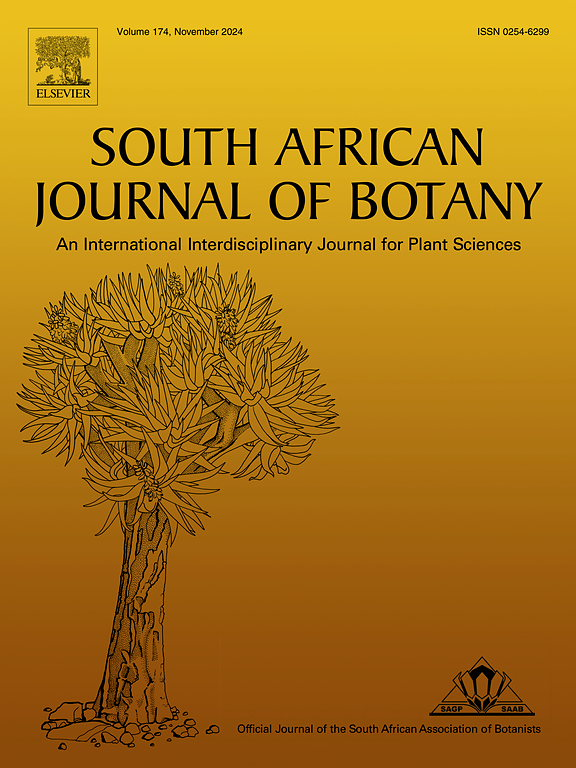Ethylene precursor, 1-amino cyclopropane-1-carboxylic acid, induced distinct morpho-physio-biochemical improvements to cadmium-stressed mungbean (Vigna radiata L.)
IF 2.7
3区 生物学
Q2 PLANT SCIENCES
引用次数: 0
Abstract
Purpose
Heavy metals (HMs) are stored in plant cellular organelles and consumption of food contaminated with HMs can cause toxicity in humans. In the current study, a cadmium (Cd) sensitive mungbean cultivar (cv.) NM-28, identified through physio-biochemical attributes was used to access the efficacy of 1-amino cyclopropane-1-carboxylic acid (ACC, ethylene precursor) in modulating Cd-induced negative impacts on mungbean growth and biochemical attributes.
Methods
Experiment was executed in pots filled with soil amended with 0, 5 or 10 mg kg−1 of cadmium chloride (CdCl2). Twenty days after germination, aqueous solution of ACC at 0, 10, 50 and 100 µM were applied as foliar spray. After 30 days, plants were harvested and processed for analysis of nutrient uptake patterns, growth attributes and bio-chemical status.
Results
The presence of Cd in the soil negatively affected mungbean growth by interfering with uptake and translocation of essential nutrient ions such as magnesium (Mg), calcium (Ca) etc. When foliar ACC (50 µM) was applied under 5 mg kg−1 Cd stress, the cv. NM-28 showed improvements in shoot dry weight (36 %), root fresh weight (72 %), and root dry weight (38 %). Application of 50 µM ACC also increased chlorophyll a (25 %), chlorophyll b (24 %), total soluble proteins (35 %), phenolics (21 %) and peroxidase (POD) activity (17 %) under 5 mg kg−1 Cd stress compared to 0 mg kg−1 Cd (control). Similarly, 50 and 100 µM ACC enhanced nutrient uptake (Ca and K) from soil under Cd stress. However, some biochemical features were negatively impacted by 100 µM ACC treatment. Furthermore, the negative impact induced by 10 mg kg−1 Cd was not significantly recoverable by any ACC concentration.
Conclusions
Exogenous application of ACC assisted plants to maintain an optimum level of important antioxidants as well as nutrient ion concentrations, thereby improving mungbean growth despite presence of Cd. The findings of this study could be useful for better growth of legumes in Cd contaminated soil. Further experiments using molecular approaches are suggested to explore the relationships between ACC, ethylene (ET), Cd contamination, soil properties and arable crops to devise strategies for crop cultivation in HMs enriched soils and for sustainable food security programs.
求助全文
约1分钟内获得全文
求助全文
来源期刊

South African Journal of Botany
生物-植物科学
CiteScore
5.20
自引率
9.70%
发文量
709
审稿时长
61 days
期刊介绍:
The South African Journal of Botany publishes original papers that deal with the classification, biodiversity, morphology, physiology, molecular biology, ecology, biotechnology, ethnobotany and other botanically related aspects of species that are of importance to southern Africa. Manuscripts dealing with significant new findings on other species of the world and general botanical principles will also be considered and are encouraged.
 求助内容:
求助内容: 应助结果提醒方式:
应助结果提醒方式:


